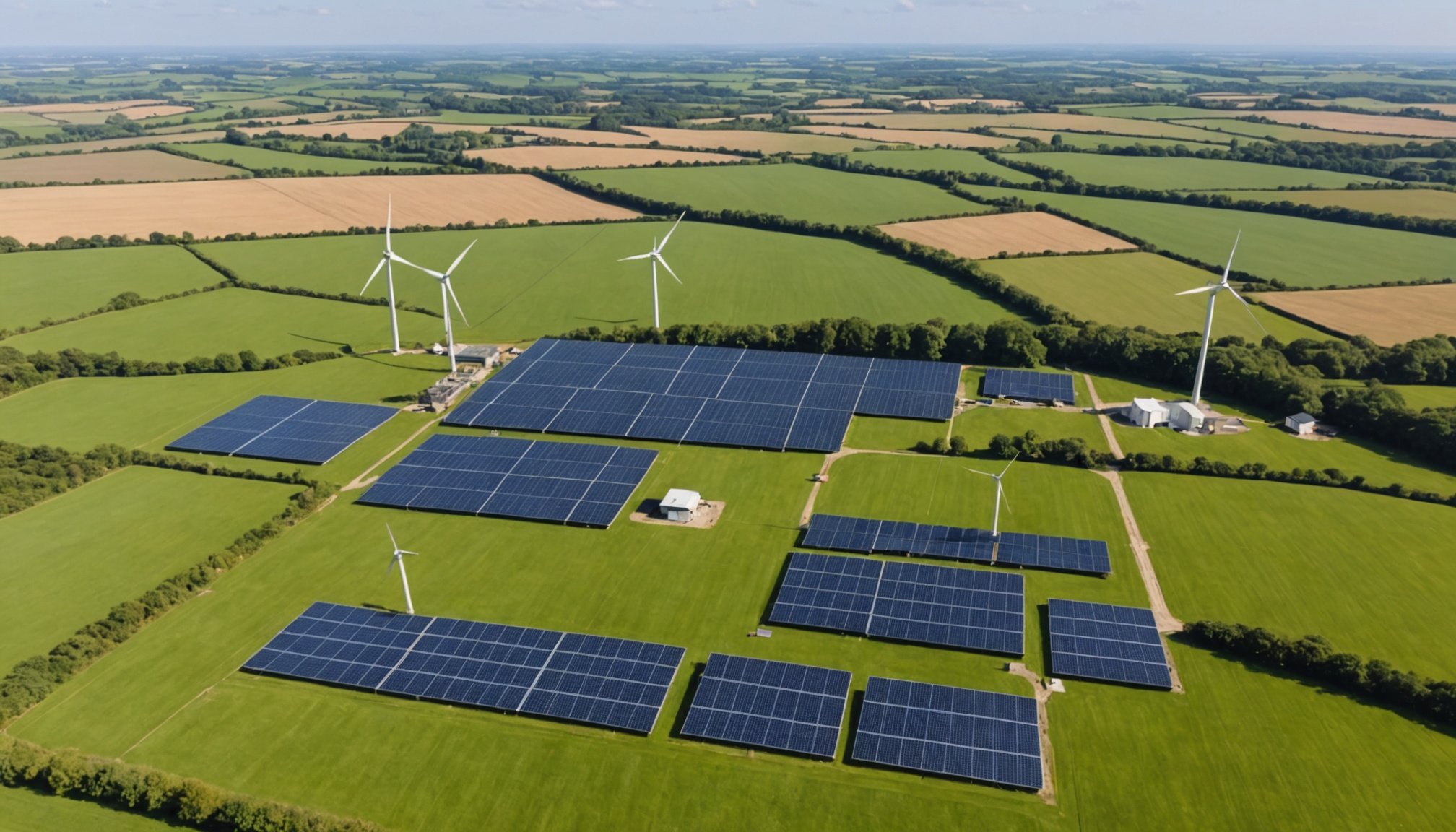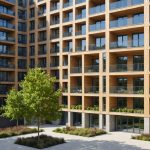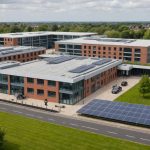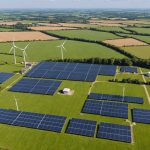Overview of Renewable Energy Facilities in the UK
Renewable energy is derived from natural resources that can be replenished over time, such as sunlight, wind, water, and geothermal heat. Renewable energy facilities are crucial for harnessing these resources and include installations like solar farms, wind turbines, hydroelectric dams, and geothermal plants. These facilities transform the UK energy landscape by shifting the focus from traditional fossil fuels to cleaner, more sustainable sources.
In recent years, the UK has seen significant growth in renewable energy installations. As part of its commitment to reducing carbon emissions and combatting climate change, the government has implemented various policies and incentives. These initiatives have facilitated the expansion of renewable energy facilities, making them more prevalent across the region.
Topic to read : Unlocking Profit: The Economic Advantages of Investing in Real Estate Close to UK Film Studios
Several government initiatives have played a pivotal role in this growth. For example, the Feed-in Tariff schemes and Contracts for Difference have incentivized the adoption of renewable energy by offering financial support. Additionally, regulatory frameworks encourage private investments and technological innovations, further fuelling the growth of the UK energy landscape.
In summary, the commitment to enhancing renewable energy facilities has resulted in a significant transformation of the UK’s energy sector, emphasizing sustainability and reducing environmental impact.
Also read : Unlocking the Economic and Social Advantages of Community Centers in Urban UK Development
The Relationship Between Renewable Energy Facilities and Property Values
The influence of renewable energy facilities on property values is a topic with varying conclusions. In areas where renewable projects, such as wind farms or solar parks, are embraced, property values often see a neutral to positive impact. This is largely due to the increased interest in sustainable living and the potential for reduced utility costs, making these properties more attractive to buyers.
However, the real estate market reacts differently across various regions. In some cases, nearby property values could experience a decline due to aesthetic concerns or perceived noise pollution associated with renewable energy facilities. These impacts often hinge on community acceptance and the integration of the facility into the local landscape.
When assessing these effects, it’s crucial to consider both short-term and long-term changes. Initially, properties near renewable projects may face uncertainty, and consequently, value fluctuations. Over the long term, as communities become accustomed to the presence of these facilities, property values may stabilize or even appreciate if the projects are perceived as beneficial.
Understanding the subtleties in how renewable energy impacts real estate is essential for stakeholders, including homeowners and investors, looking to make informed decisions.
Empirical Studies on Property Values and Renewable Energy Facilities
Recent investigations have explored how property values are influenced by renewable energy installations, such as wind farms and solar plants. Empirical studies have provided insightful analyses through both quantitative and qualitative research methods.
Key Findings from Recent Research
Empirical studies reveal a nuanced impact of renewable energy facilities on property values. While some case studies show a neutral effect, others indicate a modest decrease, often citing proximity as a key factor. By analysing empirical data, researchers have concluded that factors such as visual aesthetics and turbine noise may play a substantial role in value fluctuations.
Examples from Notable Studies
Numerous research analyses illustrate diverse impacts. For example, studies in rural areas often observe less negative effects compared to urban settings due to differing population densities and visual landscapes. These notable studies underscore the importance of geographic location in assessing property value changes.
Methodologies Used in Property Value Research
Research analysis employs both quantitative techniques, such as hedonic pricing models, and qualitative approaches, like interviews and surveys. Diverse variables are considered, including distance to facilities and geographic focus, which spans rural to urban settings. Data sources often comprise real estate transactions and local government records, ensuring comprehensive property assessments.
Factors Influencing Property Values Near Renewable Energy Facilities
Determining property valuation determinants when situated near renewable energy facilities requires a nuanced approach. Firstly, the aesthetic impacts play a considerable role. Wind turbines and solar panels can alter the visual landscape, influencing how potential buyers perceive the area’s attractiveness. This shift in aesthetics might lead to varied interpretations, affecting the neighborhood’s charm and, consequently, property values.
Environmental concerns are also critical influencing factors. Communities might harbour worries about noise, wildlife impacts, or light pollution, which can lead to either negative or positive perceptions. For example, while some may appreciate the commitment to eco-friendly solutions, others may view potential disruptions as a deterrent.
Socioeconomic factors also intervene significantly. The presence of renewable facilities can lead to neighborhood impact in terms of local job creation or increased business for nearby enterprises, potentially boosting demand for housing. Conversely, if the facilities are perceived negatively, it might stagnate local property markets.
Finally, local real estate trends must be considered. An area investing heavily in renewable energy tech might attract eco-conscious buyers, aligning property values positively with broader environmental concerns. Conversely, resistance from the community regarding changes could skew trends unfavourably.
Regional Variations in Property Value Influence
Understanding the UK property market dynamics requires examining how regional differences impact property values. Various factors contribute to these disparities.
Case Studies from Different Regions
In different regions across the UK, property values vary significantly due to unique local factors. For instance, London’s property market remains resilient, driven by its global financial hub status. Conversely, Northern towns like Sunderland experience lower values due to limited economic opportunities. Such regional differences arise from varying local economies, job markets, and demand for housing.
Urban vs. Rural Impact
Urban areas typically boast higher property values than their rural counterparts. This difference is primarily because urban centres offer extensive amenities and better employment prospects, attracting more buyers. In contrast, rural areas may suffer from decreased demand and limited infrastructure, pulling property values down. Hence, the urban-rural divide plays a critical role in comparative analysis of property values.
Comparative Analysis of Property Value Trends
Local policies, such as zoning laws or incentives for green energy facilities, can significantly affect property prices. For instance, London’s congestion charge encourages development within its limits, positively influencing property values. Historically, regions with energy facilities have seen varied effects; some area values increased due to job creation, while others faced decline due to environmental concerns. Thus, examining historical and current policies is essential in understanding property market dynamics.
Stakeholder Perspectives and Implications
Understanding stakeholder perspectives is essential when considering renewable energy projects. Homeowner concerns focus on potential impacts of nearby facilities, like noise and aesthetics. They often worry whether these projects might reduce property value or disrupt local ecosystems.
Meanwhile, investor insights into real estate near renewable energy installations highlight both risks and opportunities. Investors are increasingly recognising the potential for increased property values due to enhanced energy efficiency and sustainability. However, they diligently evaluate factors such as government incentives or regulatory risks that can affect profitability.
Urban planners are an integral part of the conversation, with a keen eye on effectively integrating renewable energy with community development. They strive to balance environmental benefits with urban aesthetics and functionality. Their goal is to harmonize these installations with the community’s existing infrastructure, creating a symbiotic relationship between the development and its social environment.
Stakeholder perspectives are not just about immediate concerns but also long-term implications for the community and investors alike. Addressing these varied viewpoints can ultimately lead to more sustainable and accepted renewable energy solutions. Understanding each perspective helps ensure a shared vision where renewable energy and community coexist.











